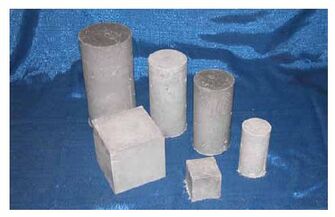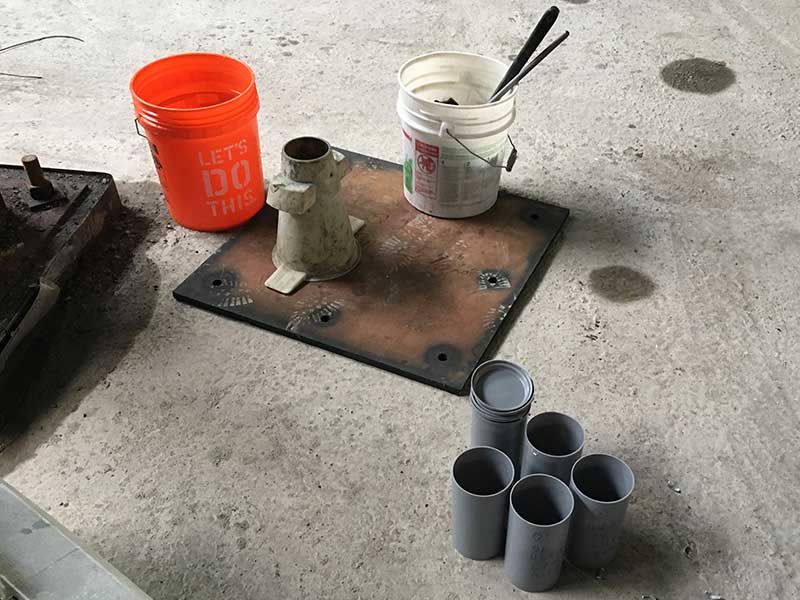Navigate Tasks with Confidence: Expert Concrete Testing Near Me Unveiled
Navigate Tasks with Confidence: Expert Concrete Testing Near Me Unveiled
Blog Article
Beyond the Surface area: Technologies in Concrete Screening Methods
Concrete is one of the most extensively used building and construction materials, known for its strength and durability. Guaranteeing the top quality and reliability of concrete structures calls for extensive screening and evaluation. Over the years, advancements in technology have paved the means for cutting-edge techniques that surpass the surface area of concrete. From sophisticated imaging innovations and non-destructive screening approaches to high-tech sensing units and monitoring systems, the field of concrete testing has actually witnessed exceptional progression. But that's not all - the assimilation of robotic and automation remedies, paired with the use of artificial intelligence, has actually even more revolutionized the way we analyze concrete structures. In this discussion, we will certainly discover these innovative advancements that are shaping the future of concrete screening, revealing the exciting possibilities they provide for boosting construction practices and ensuring the long life of our constructed environment.
Advanced Imaging Technologies

One more sophisticated imaging technology used in concrete testing is ground-penetrating radar (GPR) GPR makes use of electromagnetic waves to detect and map subsurface functions, such as rebar, gaps, and delaminations. By providing real-time information on the problem of the concrete, GPR assists in identifying potential weak points or issues that may compromise its architectural integrity.
Furthermore, advanced imaging modern technologies have actually changed the area of concrete petrography. Microscopic lens outfitted with digital imaging capacities enable comprehensive analysis of concrete samples at the microstructural degree. This makes it possible for the recognition of numerous components, such as concrete paste, aggregates, and extra materials, as well as the detection of deleterious responses or deterioration mechanisms.
Non-Destructive Evaluating Methods
Structure upon the advancements in imaging technologies, the next location of focus in concrete screening involves the use of non-destructive screening methods. These methods provide valuable insights right into the architectural stability and efficiency of concrete without triggering any damages to the product.
An additional non-destructive screening approach is the impact-echo examination. This strategy entails striking the surface area of the concrete with a hammer and evaluating the resulting acoustical feedback. The impact-echo examination is especially useful for finding delamination, which is the separation of layers within the concrete. In addition, ground-penetrating radar (GPR) is a non-destructive testing approach that uses electromagnetic waves to produce photos of the subsurface of concrete structures. This strategy can detect the existence of enhancing bars, spaces, and other abnormalities within the concrete.
Non-destructive testing methods use numerous benefits over devastating testing techniques. They permit for the evaluation of larger areas and give real-time results. In addition, they are affordable and minimize disruptions to ongoing building tasks. By including non-destructive screening techniques into concrete testing protocols, engineers can get exact and trusted details about the condition of concrete frameworks, guaranteeing their lasting longevity and safety and security.
High-Tech Sensors and Keeping An Eye On Equipments
In the realm of concrete screening, the assimilation of state-of-the-art sensors and keeping track of systems has reinvented the way engineers gather data and examine the performance of frameworks. These advanced modern technologies give real-time info on various specifications, such as temperature level, dampness pressure, content, and load circulation, permitting for a much more comprehensive and accurate understanding of concrete habits.
Among the most significant improvements in this field is using ingrained sensors. These sensing units are ingrained within the concrete throughout the building and construction procedure and can continuously check the structural health of the concrete. They can detect early signs of deterioration, such as cracks or deterioration, and give valuable data for upkeep and fixing decisions.
An additional innovative monitoring system is making use of wireless sensors. These sensors can be placed on the surface of the embedded or concrete within it, and they send data wirelessly to a main surveillance station. This gets rid of the demand for hands-on data collection and enables real-time surveillance of several criteria at the same time.
Additionally, the assimilation of sophisticated sensors and keeping track visit of systems has actually allowed the development of predictive versions for concrete performance. By gathering and analyzing data with time, engineers can recognize patterns and patterns, allowing them to predict future actions and make informed choices pertaining to maintenance and repair work methods.

Robot and Automation Solutions
The integration of modern sensing units and monitoring systems in concrete screening has led the way for the application of robot and automation remedies to additionally enhance efficiency and precision in evaluating the performance of frameworks. Robotic and automation services provide a range of advantages in concrete testing, consisting of raised efficiency, improved security, and enhanced information collection.
One area where robotic remedies have actually been effectively applied remains in the testing of concrete stamina. Traditional techniques involve manually gathering concrete samples and subjecting them to research laboratory testing. Nonetheless, this process can be labor-intensive and lengthy. Robot systems, on the various other hand, can automate the entire process, from sample collection to screening, substantially reducing the time and effort needed.
Automation services also play a crucial function in non-destructive testing methods. As an example, independent drones geared up with sensors can be made use of to check big concrete structures, such as dams or bridges. These drones can gather data on the architectural integrity of the concrete, discovering any type of indicators of damages or deterioration without the need for manual inspection.
Artificial Intelligence in Concrete Screening
Artificial Knowledge has transformed the field of concrete testing, providing sophisticated algorithms and machine knowing capabilities that enhance the accuracy and effectiveness of assessing the quality and efficiency of concrete frameworks. concrete testing near me. By harnessing the power of AI, engineers and researchers have the ability to assess huge quantities of information to get useful insights right into the actions and durability of concrete
One location where AI has actually made substantial improvements is in non-destructive testing (NDT) AI formulas, on the other hand, can evaluate information from various sources, such as electronic cameras and sensing units, in real-time and provide instantaneous responses on the condition of the concrete.
In Addition, AI has likewise been employed in predictive modeling to estimate the long-lasting efficiency of concrete structures. By inputting information on the composition of the concrete, ecological factors, and loading conditions, AI algorithms can anticipate the architectural stability and life expectancy of the concrete. This information is indispensable for engineers when developing brand-new frameworks or analyzing the safety of existing ones.
Verdict
In verdict, advancements in concrete screening methods have actually significantly improved with the appearance of innovative imaging innovations, non-destructive screening approaches, state-of-the-art sensing units and keeping track of systems, robotic and automation remedies, and expert system. These developments have actually enabled even more accurate and reliable screening, resulting in far better quality assurance and durability of concrete structures. Proceeded r & d in this area will continue to enhance the understanding and evaluation of concrete residential or commercial properties, guaranteeing the long life and safety of building and construction projects.
From advanced imaging modern technologies and non-destructive testing methods to high-tech sensors and keeping track of systems, the field of concrete screening has experienced amazing progression. By integrating non-destructive screening techniques right into concrete testing procedures, designers can get precise and reliable details about the problem of concrete why not check here frameworks, guaranteeing their long-term sturdiness and safety.
These sensors are ingrained within the concrete throughout the construction process and can continuously check the architectural health and wellness of the concrete. By inputting data on the structure of the concrete, environmental factors, and loading conditions, AI formulas see this here can predict the architectural stability and lifespan of the concrete.In final thought, improvements in concrete testing techniques have actually dramatically improved with the introduction of innovative imaging modern technologies, non-destructive testing approaches, state-of-the-art sensing units and keeping track of systems, robotic and automation options, and fabricated knowledge.
Report this page